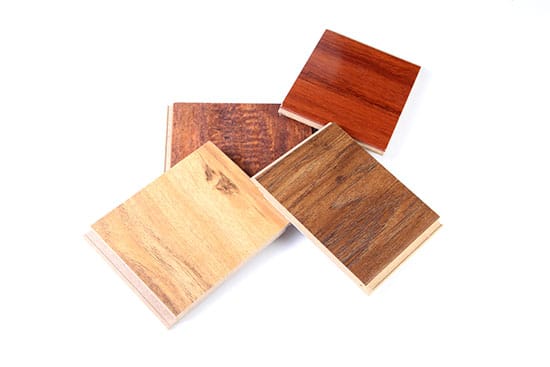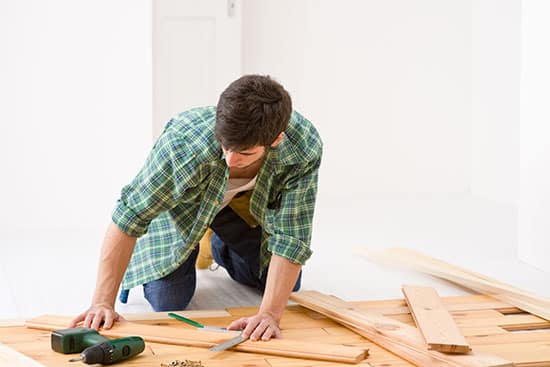Understanding Wood Movement—The Key to Protect Your Projects
What is the key to preventing the majority of damage to wood projects?
Understanding wood movement. Because wood comes from a living material, it changes shape and size over time due to temperature and humidity shifts.
And if not understood or addressed, wood movement can spoil your project with warping and cracking.
Whether you’re using wood for furniture, flooring, cabinetry, or some other application, you’ll want to understand wood movement so you can stop it before it happens. The following sections will guide you to do just that:
- Types of wood movement
- Factors affecting wood movement
- Wood selection and preparation
- Design considerations for wood movement
- Wood finishing
- Wood maintenance
- Troubleshooting and repair
Let’s start by looking at the different ways wood can move.
Types of Wood Movement
Wood movement, primarily caused by fluctuations in moisture content, is an essential aspect to consider in woodworking. As wood absorbs or releases moisture, it experiences expansion or contraction.
Additionally, the grain direction, determined by the wood-cutting method, impacts the rate at which wood absorbs or releases moisture. Most wood movement occurs radially and tangentially; hence, quartersawn wood is more stable compared to flat-sawn wood.
Being mindful of these considerations throughout the woodworking process can help prevent moisture-related damage in the long run.
Factors Affecting Wood Movement
Wood strives to achieve equilibrium moisture content (EMC), which is the moisture content that corresponds to the surrounding environment. Until it reaches this state, wood will continue to expand or contract. Temperature and humidity changes affect the moisture level in the wood and contribute to wood movement.
Until wood reaches EMC, it will continue to expand or contract. Notably, temperature and humidity changes directly impact wood movement, since they will lead to changes in the wood’s moisture content.
To minimize movement after completing a woodworking project, ensure the wood is acclimated to its environment beforehand.
In addition to these external factors, the inherent properties of the wood also play a role in wood movement.
Various wood species exhibit distinct movement rates due to differences in their susceptibility to moisture content changes. Stable species like mahogany and teak are less prone to movement, while others such as maple and oak tend to experience greater movement.
By taking these factors into account throughout the woodworking process, you can effectively minimize moisture damage in the long term.
Wood Selection and Preparation
As you plan your project—whether crafting furniture, installing a hardwood floor, or undertaking outdoor construction—here are some considerations to account for wood movement.
Select the Appropriate Wood Species

As previously mentioned, certain wood species are more stable and less prone to movement, making them better suited for projects where wood movement is a significant concern. Keep in mind that while constructing a deck, for example, the moisture content of the wood may not be as critical, and some people may use wetter wood for this application. However, for indoor projects like furniture making and hardwood flooring installation, selecting a stable wood species is crucial to ensure longevity and quality.
Spend time researching the species you’re considering. One useful resource is the Wood Handbook published by the U.S. Forest Service. Chapter 2 lists wood species and discusses how they’re affected by wood moisture.
Choose Kiln-Dried Lumber
Kiln-dried lumber is dried in a controlled environment to achieve a specific moisture content. This process reduces the likelihood of wood movement and ensures a more stable product.
When you’re out wood shopping, look for lumber marked as “KD” (kiln-dried) or “S-DRY” (surfaced-dry).
Opt for Quartersawn Wood
Because wood tends to experience more moisture loss and movement in certain dimensions than others, you’ll want to choose a more stable woodcut. Quartersawn wood, which has its growth rings perpendicular to the surface, is one of the best options.
Check Moisture Content

Guesswork is not enough when it comes to determining the moisture content of your wood. You’ll need a wood moisture meter to get accurate, reliable data.
Two types of meters are available for measuring moisture content in wood: a pin-type moisture meter or a pinless moisture meter. Both options can provide accurate readings if you use a high-quality meter. A pinless meter is often preferable, as it doesn’t leave pinholes in your wood, preserving its aesthetic appeal. Additionally, pinless meters generally offer faster readings compared to pin meters.
When should you measure moisture content?
It’s critical to do so before you purchase the wood and before you begin your project.
Check that the reading is as close as possible to the EMC of your area. For interior applications, it’s typically 6–8%, while exterior applications may require around 9–14%.
Use an EMC chart to figure out the average EMC for your area.
If the moisture content of your wood is far from the EMC, you may want to find other wood rather than spend time drying it.
But if the number is only a couple of points off, all it needs is time to acclimate.
Acclimate Your Wood
Allowing wood to acclimate to its final environment before use helps to stabilize its moisture content. This way, you’ll reduce the chance of movement-related issues.
Acclimation involves storing wood in the space where it will be used, with proper air circulation and controlled temperature and humidity.
The acclimation time will vary based on wood species and initial moisture content. A general guideline is to allow at least one to two weeks for acclimation.
How can you know when your wood is ready?
Use your wood moisture meter to see if the wood has reached the EMC.
Only then can you safely begin to work. And even then, you’ll want to keep wood movement in mind.
Design Considerations for Wood Movement
By managing moisture content before you begin your project, you’ve set yourself up to avoid most wood movement. Nonetheless, you shouldn’t let your guard down completely. There are still other steps during the woodworking process to help prevent movement.
When designing and constructing wooden projects, allow for expansion and contraction by providing enough space between components. This way, you’ll prevent undue stress on joints and fasteners, which could lead to warping or cracking.
And since wood expands and contracts primarily across the grain, try to align your components with similar grain directions. This will help prevent differential movement and reduce the risk of problems.
You can also accommodate movement by the type of joinery you use. Here are some examples:
- Floating panels: In cabinet doors or other panel assemblies, using floating panels allows for wood movement without stressing the frame or causing cracks.
- Breadboard ends: These are used on tabletops and other large surfaces to help control warping and cupping.
- Sliding dovetails: This type of joint allows for linear movement along the joint’s length.
- Tongue and groove joints: Commonly used in flooring and paneling applications, tongue and groove joints allow for expansion and contraction while maintaining a tight, even appearance.
Let’s look now at some considerations for specific projects:
Flooring and Paneling
 Account for expansion and contraction to prevent buckling or gaps. Use proper installation techniques, spacing, and underlayment.
Account for expansion and contraction to prevent buckling or gaps. Use proper installation techniques, spacing, and underlayment.
Furniture Construction
- Case goods: When constructing case goods like dressers and bookshelves, consider using frame-and-panel construction.
- Tables and chairs: Use appropriate joinery techniques and allow for expansion and contraction in critical areas, such as where panels meet up with legs.
- Beds: Use floating panels or slatted designs for headboards and footboards.
Outdoor Projects
- Decking and fencing: Choose wood species with decay resistance. Provide proper spacing between boards for expansion and contraction.
- Garden furniture: Use stable species, durable finishes, and joinery techniques that allow for movement.
- Pergolas and gazebos: Construct pergolas and gazebos with strong joinery and adequate spacing.
Once your structural components have been fitted and attached, here are some moisture-related points for finishing and maintenance.
Wood Finishing
Finishes can help reduce the rate of moisture exchange between wood and its surrounding environment, but they do not completely seal the wood against moisture. It’s essential to maintain appropriate humidity levels for optimal wood performance.
Your options for finishes include:
Oil-based finishes: These finishes penetrate the wood fibers, offering a durable barrier that slows down moisture movement.
Water-based finishes: Although less effective at reducing moisture movement, water-based finishes are more environmentally friendly and have quicker drying times.
Varnishes and polyurethanes: These finishes create a strong, protective surface film that helps limit the wood’s exposure to moisture.
Natural oil finishes: Natural oils like linseed or tung oil provide moderate resistance to moisture movement and a low-sheen, natural appearance.
To ensure the finish effectively slows down moisture movement, prepare the surface by sanding and cleaning it thoroughly. Follow the manufacturer’s guidelines and allow the finish to fully cure and dry.
Keep in mind that while the finish can help minimize moisture-related issues, it is still crucial to maintain proper humidity levels for the best performance and durability of your wood projects.
Wood Maintenance
To maintain the quality and longevity of your wood projects adhere to the following wood care practices:
- Surface protection: Use coasters, placemats, or other protective barriers to prevent direct contact between hot, cold, or wet items and the wood surface. This measure will help avoid moisture-related issues and potential damage.
- Avoid direct sunlight: Prolonged exposure to sunlight can lead to wood fading, drying, and potential movement issues. Position your wood projects away from direct sunlight, or use blinds or curtains to reduce exposure.
- Address spills immediately: Wipe up any spills promptly to prevent moisture from penetrating the wood and causing potential warping or cracking.
- Use appropriate cleaning products: Choose mild, wood-safe cleaning solutions to clean your wood surfaces. Avoid harsh chemicals that may damage the wood or compromise the finish.
- Regular inspections: Periodically check your wood projects for any signs of damage or wear, such as loose joints, lifting veneers, or fading finishes. Address these issues promptly to maintain the integrity and appearance of your woodwork.
Troubleshooting
After all your hard work, what if you notice some warping or cracking in your woodworking project? The first step in solving the issue is to figure out its cause.
You’ll want to:
- Investigate the surrounding environment for potential moisture sources. Look for leaks or high humidity, which may contribute to wood movement.
- Assess the impact of other environmental factors, such as sunlight exposure or temperature fluctuations.
Then, whether the cause is moisture, design, or environmental factors, find a way to resolve the underlying cause. Then, you’ll probably have to rebuild the project or floor utilizing undamaged wood.
Use this guide as your starting point. By accounting for moisture ahead of time, you’ll save yourself the time, money, and headache of fixing issues later on.
So invest in a good moisture meter and take the needed steps to make your wood projects beautiful and durable. You won’t regret it!
As Sales Manager for Wagner Meters, Ron has more than 35 years of experience with instrumentation and measurement systems in different industries. In previous positions, he has served as Regional Sales Manager, Product and Projects Manager, and Sales Manager for manufacturers involved in measurement instrumentation.
Last updated on June 26th, 2023



